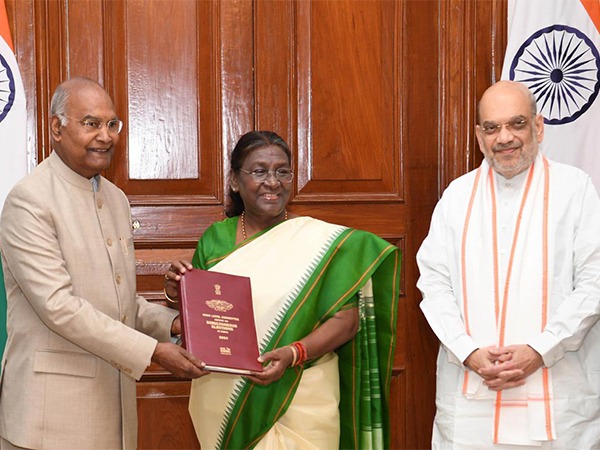One Nation, One Election: A Bold Step towards Viksit Bharat
What if elections could unite the nation, reduce chaos, and allow uninterrupted progress? "One Nation, One Election," a visionary idea led by the Modi government, aims to do just that. This article takes a closer look at how synchronized elections can streamline governance, save valuable resources, and empower citizens.
Dr. Jayanta Kumar Roy
1/8/20253 min read


India, the largest democracy in the world, has long grappled with the challenges of frequent elections. While elections form the bedrock of democratic governance, the fragmented electoral calendar has often disrupted governance, drained resources, and slowed development. The concept of “One Nation, One Election” (ONOE), spearheaded by the Central Government under Prime Minister Narendra Modi, seeks to address these challenges. With the introduction of the 129th Constitutional Amendment Bill, this vision moves closer to becoming a reality. This article delves into the nuances of ONOE, its historical context, potential benefits, and the road ahead.
Understanding One Nation, One Election
ONOE envisions a synchronized electoral process where elections to the Lok Sabha, State Legislative Assemblies, and possibly local bodies are conducted simultaneously. This approach aims to replace the existing staggered election schedule with a unified electoral cycle, thereby reducing disruptions and enabling better governance.
Key Objectives:
Reduce Costs: Conducting elections simultaneously will drastically cut expenses on security, logistics, and manpower.
Enhance Governance: Frequent elections lead to the imposition of the Model Code of Conduct (MCC), which stalls developmental initiatives. Unified elections will ensure uninterrupted governance.
Improve Voter Engagement: Simultaneous elections can address voter fatigue and enhance participation, as citizens will have fewer instances of election overload.
Administrative Efficiency: A unified electoral process optimizes the deployment of resources, including security forces and administrative machinery.
Historical Context
Simultaneous elections are not a new idea. India conducted its first four general and state elections (1952, 1957, 1962, and 1967) simultaneously. However, this cycle was disrupted due to premature dissolutions of certain state assemblies and the Lok Sabha. Over time, the decoupling of electoral cycles became the norm, leading to the frequent elections we witness today.
Reports Advocating ONOE:
Law Commission of India (170th Report): Recommended simultaneous elections to reduce costs and governance disruptions.
NITI Aayog Discussion Paper (2017): Highlighted the benefits of ONOE, emphasizing administrative and financial savings.
Parliamentary Standing Committee (2015): Advocated for ONOE to streamline governance and curb electoral malpractices.
The 129th Constitutional Amendment Bill
The introduction of the 129th Constitutional Amendment Bill is a pivotal step in institutionalizing ONOE. It proposes amendments to key articles of the Constitution to enable synchronization of electoral terms. Below are the salient features:
Proposed Amendments:
Amendment to Articles 83 and 172:
Aligns the terms of the Lok Sabha and State Legislative Assemblies to facilitate simultaneous elections.
Temporary Adjustments:
Provisions for extending or curtailing the terms of assemblies to bring them in sync with the electoral cycle.
Strengthening the Election Commission:
Grants the Election Commission of India additional authority and resources to manage the logistics of large-scale simultaneous elections.
Provision for Mid-Term Dissolution:
Mechanisms to address scenarios where a government loses majority mid-term, ensuring continuity of governance without disrupting the unified election cycle.
Government’s Vision:
The Modi government envisions ONOE as a transformative reform to streamline governance, reduce fiscal pressures, and create a seamless democratic process. As emphasized in The Economic Times (2023), this initiative underscores fiscal prudence and governance stability.
Potential Benefits
1. Economic Efficiency:
The staggering costs of elections are a recurring concern. According to a report in The Hindu (2022), the 2019 Lok Sabha elections alone cost the exchequer over Rs. 60,000 crore. Synchronizing elections can reduce such expenditures significantly, redirecting resources toward developmental projects.
2. Enhanced Governance:
Frequent elections disrupt policymaking. The imposition of the MCC halts new project launches and policy decisions. ONOE ensures continuous governance and faster implementation of developmental initiatives, aligning with the government’s Sabka Saath, Sabka Vikas, Sabka Vishwas, Sabka Prayaas vision.
3. Unified National Vision:
By aligning electoral cycles, ONOE fosters a national vision of governance, promoting unity and reducing divisive regional narratives during elections.
4. Strengthened Democratic Process:
By reducing voter fatigue, ONOE encourages higher participation, making the democratic process more inclusive and representative.
5. Efficient Resource Deployment:
Unified elections optimize the use of resources such as security forces, administrative machinery, and polling infrastructure, ensuring efficiency and transparency.
Global Precedents
Countries like South Africa, Indonesia, and Sweden conduct simultaneous elections. These nations have demonstrated the feasibility of ONOE, showcasing reduced costs and improved governance. India can draw valuable lessons from their experiences, adapting them to its unique socio-political landscape.
Conclusion
“One Nation, One Election” embodies a transformative vision for India’s democracy. By reducing electoral costs, ensuring governance continuity, and enhancing administrative efficiency, it aligns with the Modi government’s commitment to fostering holistic development. While challenges remain, the 129th Constitutional Amendment Bill marks a significant step toward institutionalizing ONOE. With robust planning, political consensus, and public support, ONOE can redefine India’s democratic processes, paving the way for a more efficient and inclusive future.
Sources:
1. “Simultaneous Elections: Cost and Logistical Challenges,” The Hindu, 2022.
2. “The Case for One Nation, One Election,” Indian Express, 2023.
3. “Economic Implications of Frequent Elections in India,” The Economic Times, 2023.
4. Reports by the Law Commission of India and NITI Aayog on ONOE.
